Historical anime refers to a genre of anime that is either set in or inspired by historical periods, often depicting real events, people, or cultures from the past.
These anime blend fiction with historical elements, offering viewers a glimpse into various eras such as feudal Japan, ancient China, medieval Europe, or even more recent times like World War II.
The genre can either adhere closely to real history or take creative liberties by introducing fantastical elements like magic, mythological creatures, or alternate timelines.
Anime as a medium began incorporating historical themes as early as the 1960s, but the genre gained more prominence with works like Lupin III (1971), which, though largely fictional, is inspired by early 20th-century France.
Many of today’s historical anime mix real history with fantasy, providing a captivating balance between educational content and entertainment.
This genre remains significant, as it introduces viewers to rich cultural legacies while exploring universal themes through a historical lens.
Before we begin, you know that feeling of late-night reruns and static-filled VHS memories? That’s the exact vibe behind our Drop 01 tees — designed for those who still remember when anime looked imperfectly perfect.
See the full merch line-up here →
The Diary of Anne Frank (1995):
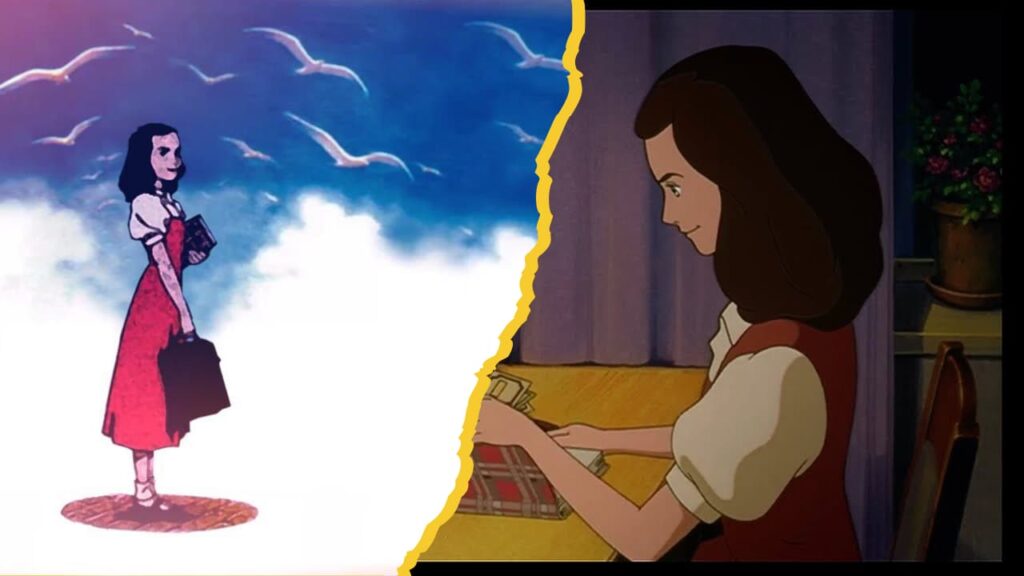
The Diary of Anne Frank stands as a poignant and respectful adaptation of one of the most important personal accounts of the Holocaust, staying true to the gravity and humanity of its source material.
This historical anime brings Anne Frank’s deeply personal experiences to life in an animated form that emphasizes the emotional weight of her story while remaining sensitive to the tragedy that unfolds.
Set during World War II, the narrative follows Anne Frank, a Jewish teenager hiding with her family in Nazi-occupied Amsterdam. As she documents her life in her diary, the anime highlights her thoughts, fears, hopes, and reflections on a world filled with hatred and violence.
Through Anne’s perspective, the show captures the innocence of youth colliding with the brutal realities of war and persecution. The moments of quiet introspection are powerful, particularly when Anne writes, “Despite everything, I believe that people are really good at heart.” encapsulates the complex duality of hope and despair that permeates her writing.
The animation, though simple, allows the emotional depth of the story to shine. It effectively captures the claustrophobia of hiding, the tension of looming danger, and the fleeting joys Anne finds in everyday life.
The historical context is woven seamlessly into the narrative, presenting an unflinching portrayal of the terror faced by Jewish families during the Holocaust, while also focusing on the resilience of the human spirit.
The Diary of Anne Frank is a testament to the historical genre, presenting an adaptation that not only honors Anne’s life but also reminds viewers of the enduring importance of her message.
The anime’s thoughtful approach to the source material solidifies its place as a meaningful and significant piece within historical storytelling.
Rurouni Kenshin (1996):
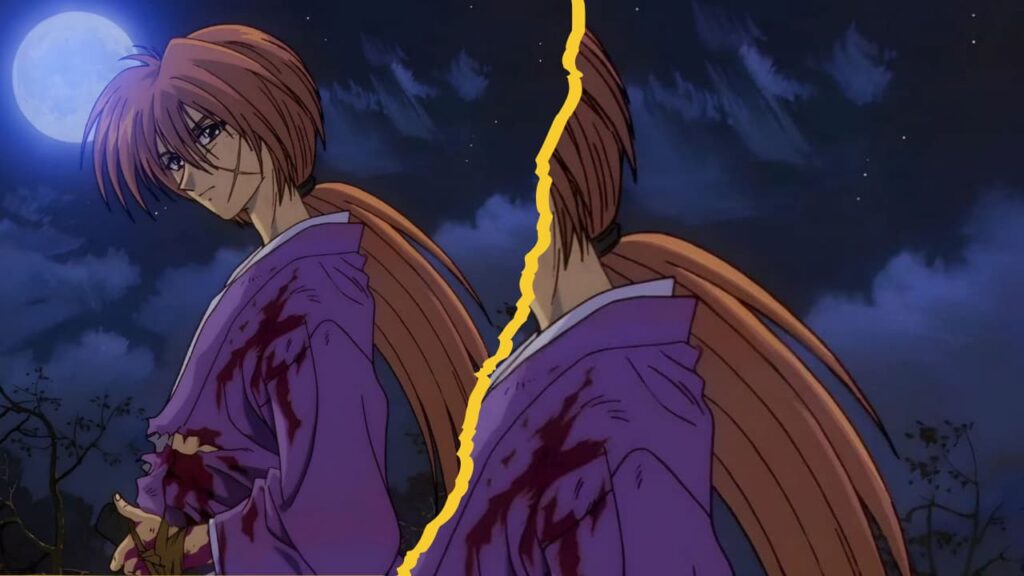
Rurouni Kenshin is a hallmark of historical anime, set during the Meiji Restoration in Japan—a time when the country was transitioning from a feudal society ruled by the samurai to a modernized nation under imperial rule.
The series follows Himura Kenshin, a former assassin who renounces violence and becomes a wandering swordsman dedicated to protecting the weak. His vow to never kill again forms the moral backbone of the series.
The narrative delves into the aftermath of Japan’s transition from the Tokugawa shogunate to the Meiji government, a period marked by political upheaval, social reform, and the decline of the samurai class.
While rooted in historical events, the anime introduces fictional elements, allowing for a blend of historical accuracy and dramatic storytelling.
The anime’s depiction of samurai culture and the ethical dilemmas of those caught between old and new worlds is especially compelling, reflecting the real-life struggles many former samurai faced during this era.
The character of Kenshin is both haunted by his past as an assassin and driven by his quest for redemption. His internal conflict mirrors Japan’s own struggle between its violent feudal past and the promise of a peaceful future.
Encapsulating this journey: “A sword is a weapon. The art of swordsmanship is learning how to kill. That is the truth. What Miss Kaoru teaches is sweet and innocent talk that only those who have never stained their hands with blood can believe.”
This reflection on violence versus pacifism anchors the series in the moral complexities of the time.
Rurouni Kenshin stands as a defining example of historical anime, combining emotional depth with accurate historical settings.
Its portrayal of personal and societal transformation against the backdrop of a rapidly changing Japan makes it a poignant exploration of honor, redemption, and the cost of peace, solidifying its place within the genre. Here are the best anime like Rurouni Kenshin you might find helpful.
Samurai Champloo (2004):
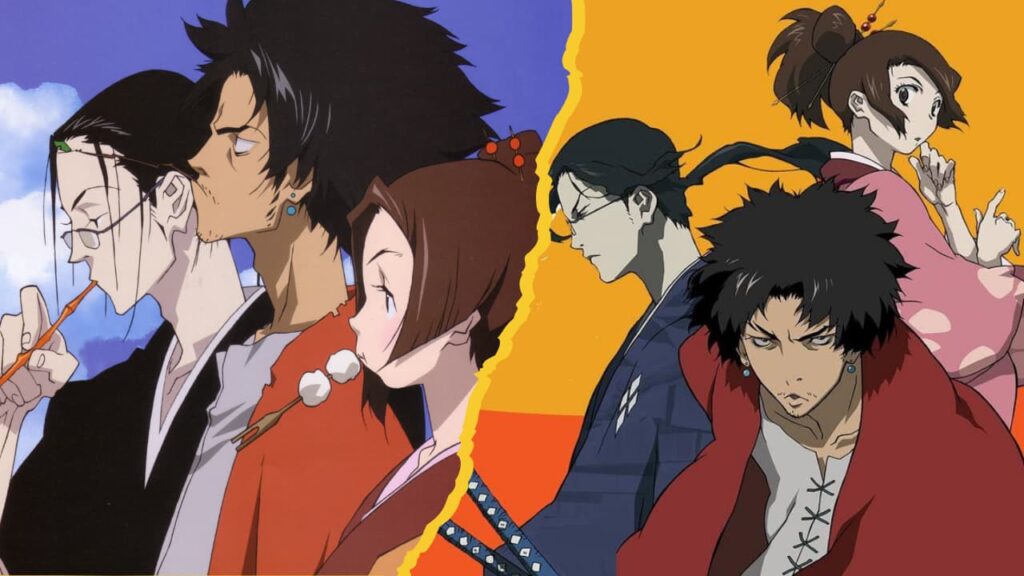
Directed by legendary Shinchiro Watanabe, Samurai Champloo is an innovative blend of historical authenticity and modern cultural elements, set in Japan’s Edo period (1603–1868).
While rooted in a historical setting, the anime infuses its narrative with a unique mix of hip-hop, graffiti, and anachronistic references, creating a fresh take on the samurai genre.
The series follows the journey of Mugen, Jin, and Fuu as they navigate Edo-era Japan in search of a mysterious figure, seamlessly weaving historical events with stylized action and contemporary sensibilities.
What sets Samurai Champloo apart is its masterful portrayal of the Tokugawa era, a time marked by strict societal structures, isolationist policies, and a rigid class system.
The anime takes liberties with historical accuracy, but it doesn’t shy away from reflecting the struggles of the lower classes, samurai traditions, and the tension between modernization and tradition.
It highlights the brutality and beauty of a time when swords were not only tools of war but also symbols of personal honor.
The series also presents historical notes on the fading era of the samurai, touching on themes of individualism and freedom in a rapidly changing society.
Through Mugen’s wild, unorthodox fighting style and Jin’s adherence to the classic samurai code, the narrative questions whether true freedom can exist within the constraints of tradition.
As one character muses, “The way of the sword is dying, but as long as there are those who remember, it will never be forgotten.” This quote resonates with the anime’s underlying theme of preserving personal identity in a world that demands conformity.
Samurai Champloo shines as a historical anime by fusing period-accurate cultural references with bold artistic liberties.
Its genre-defying narrative and profound exploration of individuality make it stand out in historical anime, offering a compelling look at Japan’s past through a modern lens.
Shura no Toki – Age of Chaos (2004):

Shura no Toki – Age of Chaos offers a unique take on the historical martial arts genre, set against the backdrop of Japan’s turbulent feudal era.
The narrative follows the legacy of the Mutsu clan, a family renowned for their unarmed combat style, which allows them to defeat any opponent without using weapons.
What sets the series apart is its episodic structure, spanning generations of warriors, offering viewers a rich exploration of Japan’s shifting historical landscape.
The anime masterfully intertwines fictional storytelling with real historical events and figures, blending martial arts mastery with Japan’s historical periods, such as the Sengoku era and the early Edo period.
By introducing notable historical figures like Miyamoto Musashi, the series gives viewers a glimpse into the legendary warriors and the socio-political struggles that defined Japan during these times.
Though the Mutsu family is a fictional creation, their interactions with real figures ground the anime in an authentic historical framework.
One of the series’ strengths lies in its exploration of honor, strength, and the samurai’s code of ethics. The battles are as much about the spirit and strategy as they are about physical prowess.
A standout line encapsulating the show’s thematic essence is: “A warrior’s true strength is not in his weapon, but in his spirit.” This emphasizes the philosophical core of the Mutsu clan’s unarmed combat style, transcending mere physicality.
Shura no Toki excels as a historical anime by immersing viewers in Japan’s feudal culture, while its focus on martial arts provides dynamic, well-choreographed action sequences.
Its mix of real history and legend ensures that it remains true to its historical roots, offering a compelling narrative that respects the genre’s elements.
Mushi-Shi (2005):
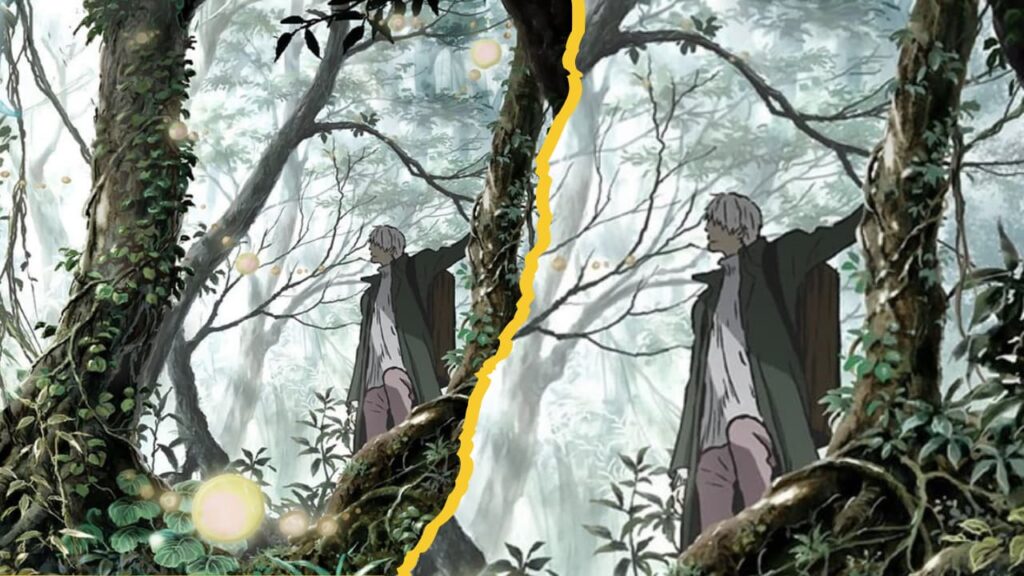
Mushi-Shi stands as a unique entry within the historical anime genre, blending Japan’s ancient folklore with a deeply atmospheric narrative.
Set in an ambiguous time period resembling the Edo or Meiji eras, the series captures the mysticism and connection to nature that characterized much of Japan’s pre-modern culture.
This narrative framework allows for a seamless integration of mushi, ethereal beings that exist on the border between life and the spiritual realm.
The story follows Ginko, a wanderer who studies and interacts with these mysterious mushi. His journey is less about grand conflicts and more about the quiet, often melancholic relationship between humanity and the natural world.
The Mushi are not presented as good or evil but as natural phenomena, reflecting the ancient Japanese worldview, where nature’s forces were respected as both benevolent and destructive.
What distinguishes Mushi-Shi as a historical anime is its attention to the spiritualism and superstitions of Japan’s past.
The rural landscapes, isolated villages, and the people’s relationship with the supernatural echo Japan’s earlier eras when Shinto beliefs in kami (spirits) permeated everyday life.
Through its episodic structure, the series feels like a collection of old Japanese folktales, where wisdom is imparted not through action, but through experience and reflection.
“The world isn’t something humans can mold to their will. It’s something far older, larger, and deeper,” speaks to the humility the characters must adopt in the face of forces beyond their control.
Mushi-Shi excels at exploring the interconnectedness of life, offering a narrative that feels timeless and reflective.
By grounding its narrative in the mystical elements of Japan’s history, Mushi-Shi becomes not just an exploration of the supernatural, but also a meditation on humanity’s place within the broader natural order, securing its place as a quietly profound historical anime.
Basilisk (2005):
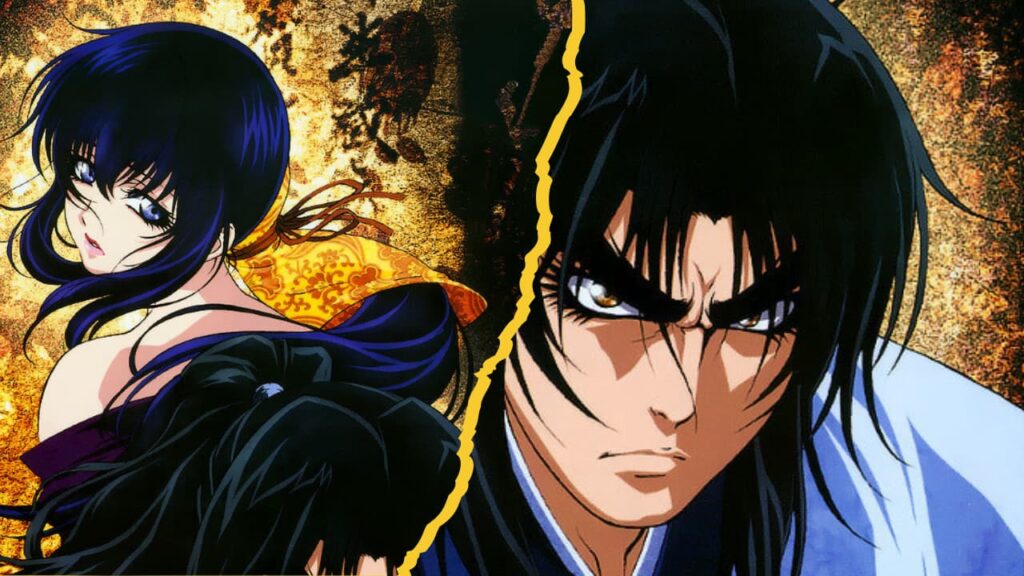
Basilisk delivers a riveting blend of historical drama and supernatural action, set during the Sengoku period in Japan.
The story follows two rival ninja clans, the Iga, and the Kōga, as they are forced into a brutal contest to determine the successor of the Tokugawa shogunate.
While the anime leans heavily into its fantastical elements, it’s grounded in the political strife of the era, where power struggles and shifting alliances defined the period.
At the heart of the narrative is the tragic love story between Gennosuke of the Kōga clan and Oboro of the Iga.
Their relationship, torn apart by duty and bloodline feuds, mirrors the internal conflicts of Japan during the transition from warlord rule to the Tokugawa peace.
The show reflects the era’s political chaos, where loyalty was often tested by ambition and survival. The historical backdrop of the Tokugawa shogunate’s rise is integral to the story.
In reality, after Tokugawa Ieyasu solidified his rule following the Battle of Sekigahara (1600), tensions among the samurai and ninja clans persisted, even as peace was enforced.
Basilisk masterfully captures this sense of shifting power, though it heightens the drama with supernatural abilities and blood-soaked betrayals.
The series’ blend of feudal politics and mysticism is underscored by a haunting quote: “To kill in the name of peace is still to kill.” This line encapsulates the series’ exploration of the futility of war and the cost of loyalty when manipulated by those in power.
Despite its supernatural twists, Basilisk remains true to the genre by portraying the ruthlessness of feudal Japan and the impossible choices forced upon those living in times of great upheaval.
Its tragic narrative and sharp historical underpinnings make it a standout entry in the realm of historical anime. And if you love Basilisk or the ninja spice associated with it, here we also went deep dive into the best Ninja Manga of all time, which you might wanna take a look at.
Kekkaishi(2006):
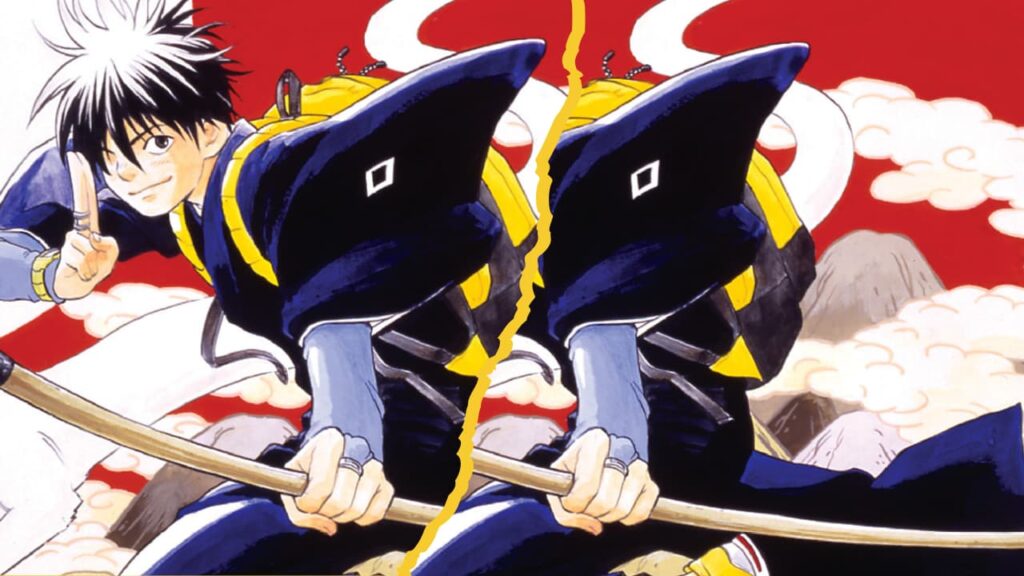
Kekkaishi weaves a compelling narrative set against the backdrop of historical Japan, blending supernatural action with an intricate lineage of spiritual guardianship.
Set in the modern day but deeply rooted in the legacy of the Karakura clan, the series draws from the rich tradition of Shinto beliefs and onmyōdō, a classical Japanese cosmology of yin-yang and spirit world interactions.
The story revolves around Yoshimori and his duty as a “kekkaishi” — one who creates magical barriers to seal away malevolent spirits.
The anime beautifully ties in historical elements, such as the Karakura clan’s origins, which trace back to ancient Japan, where clans like the Karakura were responsible for defending sacred lands from demonic entities.
The setting, though modern, reverberates with historical significance, especially the sacred site, Karasumori, which has been a focal point of mystical power for generations.
This blend of ancient guardianship duties and present-day conflicts highlights the anime’s balance between tradition and innovation, true to the historical genre.
One of the more profound elements of Kekkaishi is how it explores the burden of lineage.
Yoshimori’s struggle to live up to his family’s legacy is not only a central theme but also echoes the historical expectations placed on warriors and guardians in feudal Japan.
The series reflects on how the past shapes the present, with one poignant quote standing out: “The weight of history is not one we choose to carry, but one we cannot abandon.”
Kekkaishi shines by integrating these historical motifs with its supernatural elements, making it a unique entry into the genre.
Its exploration of family legacy, spiritual duty, and the clash between old and new highlights its historical roots while engaging in a narrative that feels both timeless and immediate.
Shonen Onmyoji (2006):
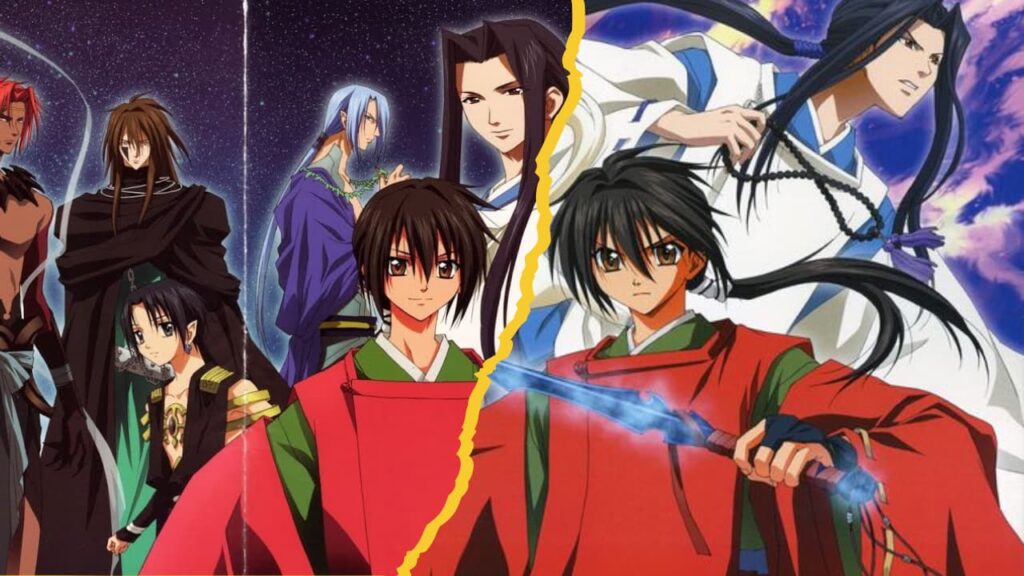
Shonen Onmyoji weaves together elements of Japanese folklore, history, and the supernatural to create a captivating historical fantasy.
Set during the Heian period (794–1185), an era known for its aristocratic culture, art, and the rise of onmyōdō (a Japanese esoteric cosmology), the anime follows Abe no Masahiro, the young grandson of the famous onmyōji Abe no Seimei.
Masahiro is determined to step out of his grandfather’s shadow and master his own abilities in exorcising spirits and demons.
The narrative is grounded in the historical significance of onmyōdō, which blends Taoism, Buddhism, and Shintoism to predict fortunes and combat evil forces.
The anime balances this with fictional elements, particularly Masahiro’s relationship with his guardian spirit, creating a dynamic mix of historical reference and supernatural adventure.
As he confronts dark entities threatening the imperial court and the wider world, Shōnen Onmyōji builds on the Heian-era fascination with mystical practices and court politics.
Historically, onmyōji served as spiritual advisors and exorcists to the nobility, often consulted for matters related to divination and celestial events.
The anime captures this role with vivid detail, blending real practices with fantasy elements, such as magical beasts and malevolent spirits.
The show’s exploration of duty and legacy is encapsulated in the line: “To follow one’s own path, one must first understand where they come from.” This reflects Masahiro’s journey of self-discovery amid his historical and familial responsibilities.
Shōnen Onmyōji successfully brings the world of Heian Japan to life, skillfully integrating historical notes with its supernatural narrative.
Its engaging portrayal of a young onmyōji navigating both family expectations and mystical challenges makes it a unique entry into the historical fantasy genre, providing both entertainment and a glimpse into a lesser-known period of Japanese history
Baccano! (2007):
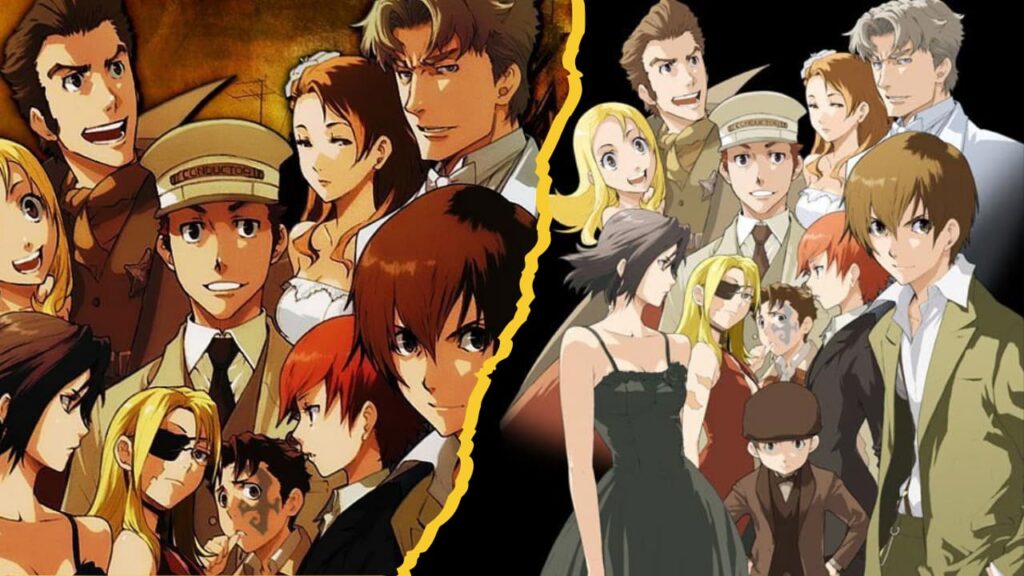
Baccano! is a masterful historical anime set against the backdrop of the Prohibition Era in the United States, blending historical accuracy with supernatural intrigue to create a uniquely captivating narrative.
The series spans the late 1930s and early 1930s, intricately weaving real historical elements with an imaginative plot involving immortality and organized crime.
The anime follows multiple interconnected storylines, centering on a diverse cast of characters including Firo Prochainezo, Isaac Dian, and Miria Harvent.
These characters are embroiled in the chaos of the time—immortal gangsters, a mysterious elixir, and a train heist that becomes the fulcrum of the unfolding drama.
The story’s non-linear structure mirrors the complexity and unpredictability of the era, capturing the essence of the Roaring Twenties and the lawlessness of Prohibition.
Baccano!’s historical setting is depicted with notable attention to detail, from the fashion and dialogue to the criminal underworld of the time.
However, it departs from historical realism through its incorporation of supernatural elements such as the Immortality Elixir, which provides a fantastical twist to the historical context.
This blend of history with fantasy is highlighted in the quote, “History is a series of moments that seem ordinary until they’re examined closely.”
Encapsulating the anime’s exploration of how extraordinary events and figures, like immortal gangsters, can reshape our understanding of a historical period.
The series excels in creating a dynamic narrative that immerses viewers in the turbulence of the Prohibition Era while skillfully blending historical and fantastical elements.
Baccano! stands out for its inventive storytelling and rich historical backdrop, offering a unique lens through which to view a transformative period in American history.
Gosick (2011):
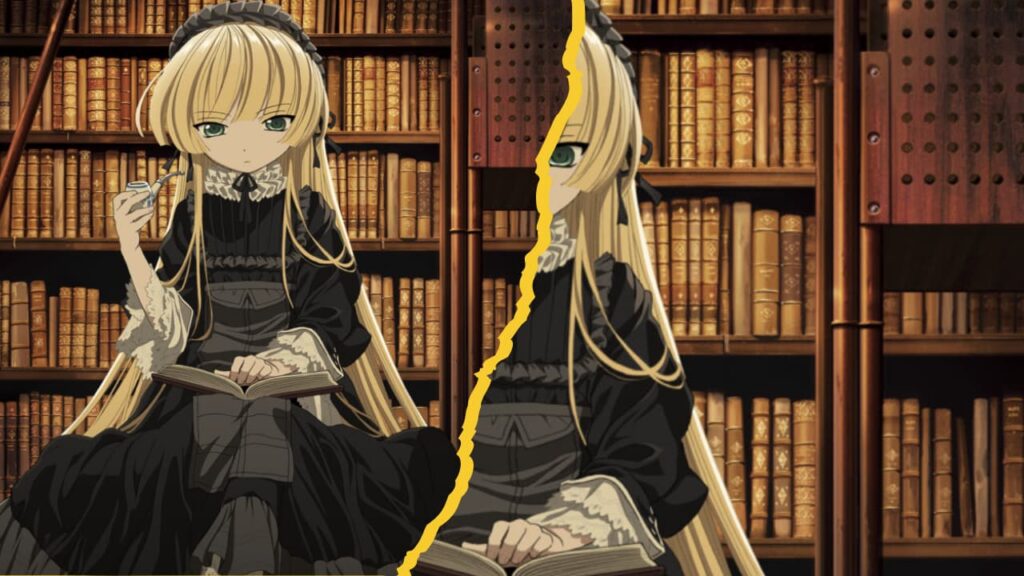
Gosick elegantly weaves a tale of mystery and historical intrigue, set in a fictional European country during the 1920s.
The series stands out for its rich depiction of a post-World War I setting, blending intricate detective work with a historical backdrop that echoes the era’s cultural and political complexity.
The narrative centers on Victorique de Blois, a brilliant young detective with an extraordinary intellect, and Kazuya Kujo, a Japanese exchange student who becomes her partner.
Together, they unravel a series of enigmatic cases, each interlaced with the social and political nuances of their time.
The series vividly captures the opulence and undercurrents of the interwar period, offering viewers a detailed look into a Europe grappling with the aftereffects of the Great War.
The historical setting of Gosick provides a rich tapestry for its plot, which is marked by its adherence to the atmosphere of early 20th-century Europe, though the country itself is fictional.
The anime cleverly incorporates elements of real historical events, such as the cultural shifts following the war and the rise of political movements, while maintaining a distinct narrative style.
This blend is encapsulated in the quote, “In a world where truth is a puzzle, only the brightest minds can see through the darkness.”
This line reflects the series’ central theme of uncovering hidden truths amidst a complex historical and social landscape.
Gosick excels in creating a compelling historical mystery by skillfully intertwining period details with a gripping narrative.
Its portrayal of a richly imagined Europe, combined with its engaging detective plot, makes it a standout in the historical anime genre, providing both an entertaining and insightful exploration of its era.
Kingdom (2012):

Kingdom is a compelling historical anime that vividly brings to life the tumultuous era of ancient China during the Warring States period.
This series stands out for its dynamic blend of historical drama and epic warfare, offering a gripping portrayal of one of China’s most formative epochs.
The narrative centers on Xin, a young orphan who dreams of becoming a great general and uniting China.
His journey, intertwined with real historical events and figures, explores themes of ambition, leadership, and the harsh realities of war.
As Xin rises through the ranks of the strongest generals of Qin, the series delves into the political and military strategies that shaped the era, while showcasing the personal and societal struggles faced by those involved in the conflict.
Historically, the series is set against the backdrop of the conflict between Zhao, Wei, and Han, leading up to the eventual rise of the Qin state.
While the anime takes creative liberties with certain events and characters, it remains rooted in the broader historical context of China’s unification under Qin Shi Huang, offering a dramatized yet insightful look into the era’s power struggles.
The narrative’s strength lies in its portrayal of battle tactics, diplomacy, and warrior ethos, reflecting the brutal realities of the time.
This is eloquently captured in the quote, “In the chaos of war, only the resolute heart will find victory.” This line highlights the anime’s exploration of personal determination and strategic acumen in the face of overwhelming odds.
Kingdom excels in bringing historical drama to life with its rich storytelling and vivid battle scenes.
Its depiction of a pivotal period in Chinese history provides both entertainment and education, making it a significant entry into the historical anime genre.
The series not only entertains but also invites viewers to engage with the complexities of a transformative era in world history. Also, here are the best quotes from Kingdom. Take a look at!
In This Corner of the World (2016):
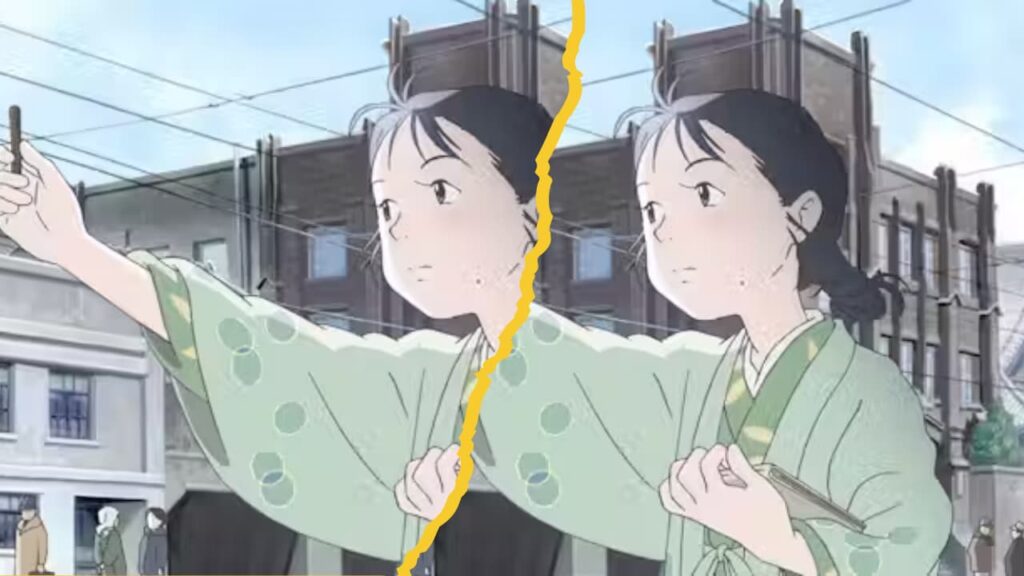
In This Corner of the World won numerous awards, including the Japan Academy Film Prize for Best Animated Film and the Jury Award at the Annecy International Animated Film Festival, and was nominated for the Annie Award for Best Animated Feature-Independent.
Director Sunao Katabuchi also made history as the first animated film director to win both the Blue Ribbon Award and the Kinema Junpo Award for Best Director. But even after all this, most of us- we haven’t heard of this anime! Can you believe it!! You should watch the trailer first!
It is a poignant historical anime that immerses viewers in the daily life of wartime Japan during World War II.
The film, directed by Sunao Katabuchi, is a meticulous portrayal of the era, focusing on the life of Suzu Urano, a young woman navigating the hardships of war and personal loss in Hiroshima.
The narrative follows Suzu from her idyllic pre-war life through the tumultuous years of conflict, providing a vivid portrayal of the era’s social and cultural context.
The anime stands out for its detailed animation and historical accuracy, depicting not only the physical destruction wrought by the war but also the emotional and psychological toll on its characters.
The setting of Hiroshima and the subsequent impact of the atomic bomb are central to the story, offering a deeply personal perspective on a pivotal moment in history.
The film’s strength lies in its ability to convey the profound impact of war on ordinary lives. Through Suzu’s eyes, viewers experience the mundane struggles and small joys of life amidst the backdrop of wartime devastation.
This is poignantly reflected in the quote, “Even amidst the darkness of war, there is a light that never fades—hope.” This line encapsulates the film’s thematic core, emphasizing resilience and the enduring human spirit.
In This Corner of the World is both a moving historical account and a tribute to the resilience of those who lived through one of the most harrowing periods in modern history.
Its careful attention to historical detail and personal storytelling make it a significant contribution to the genre, offering an intimate glimpse into the human cost of war and the strength found in everyday life.
Dororo (2019):
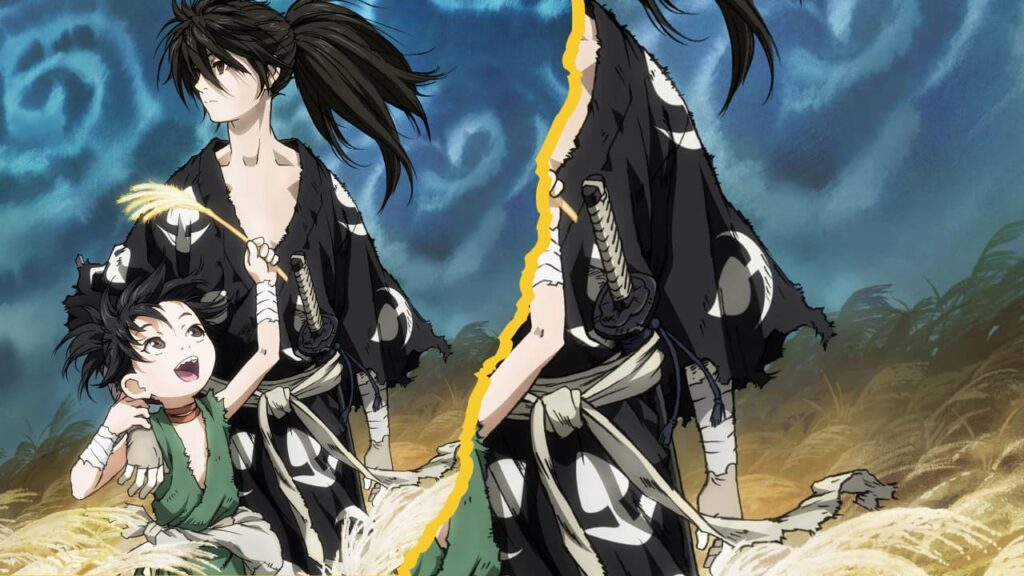
Dororo is a masterful reimagining of Osamu Tezuka’s classic manga, set against the backdrop of Japan’s tumultuous Sengoku period.
The anime combines rich historical context with supernatural elements, crafting a gripping narrative that explores themes of revenge, identity, and redemption.
Set during the late 16th century, the series follows Hyakkimaru, a young warrior cursed from birth by his father, who sacrifices his son’s body parts to demons in exchange for power.
The narrative unfolds as Hyakkimaru, now a warrior without many of his senses, embarks on a quest to reclaim his stolen body parts by defeating the demons that took them.
Alongside him is Dororo, an orphaned thief with a fierce spirit and a tragic past. Together, they navigate a Japan ravaged by civil war and supernatural terror.
The historical backdrop of the Sengoku period, a time marked by fierce samurai conflicts and political instability, adds a layer of authenticity and depth to the story.
This era, known for its power struggles and constant warfare, is vividly depicted, providing a stark contrast to the fantastical elements of the series.
The show faithfully incorporates historical aspects such as the social upheaval and the warrior class’s code, while weaving in mythological elements to enhance the narrative.
“To reclaim what was taken from you is not merely to seek vengeance, but to restore what it means to be whole.” This line underscores Hyakkimaru’s quest for personal redemption and identity amidst the chaos of a broken world.
Dororo stands out for its effective fusion of historical realism with supernatural intrigue, offering a compelling look at a historical period through the lens of a deeply personal and fantastical journey.
Its portrayal of the Sengoku period’s strife, combined with the poignant quest of its characters, makes it a standout in the genre.
Blue Eye Samurai (2023):
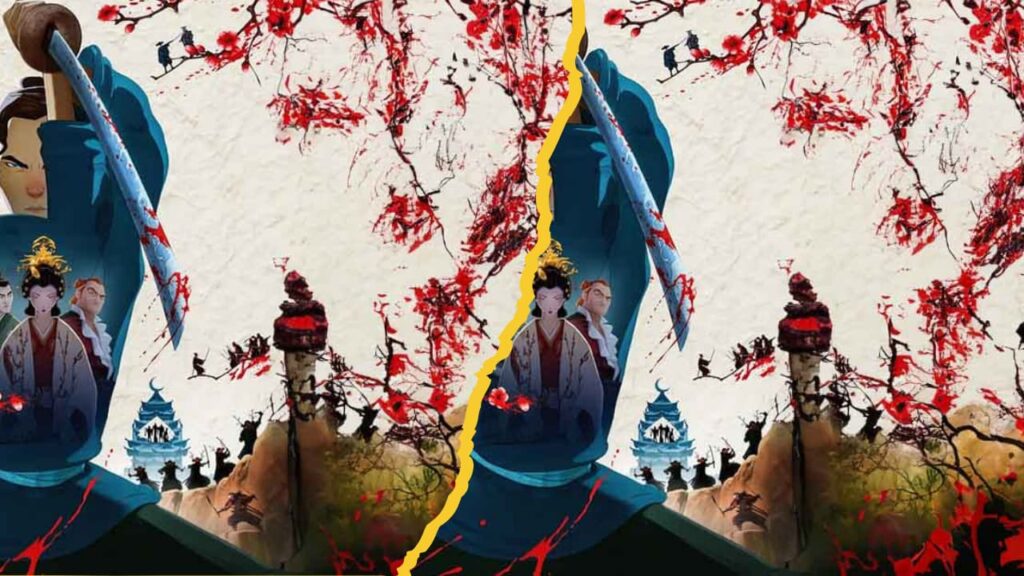
Technically it’s not an anime but Blue Eye Samurai sure deserves a spot in this list. It reinvigorates the historical anime genre with a gripping narrative set in feudal Japan.
The series delves into themes of identity, displacement, and vengeance, weaving a tale that explores the intersections of culture and history with a touch of fiction.
The story centers on Masa, a samurai of mixed heritage who bears the distinguishing trait of blue eyes—a rarity in Japan, symbolizing both his outsider status and the broader theme of racial and cultural tension.
Masa’s quest for vengeance against those who wronged him is set against the backdrop of a Japan grappling with internal strife and external pressures during the late Edo period.
This era was marked by social upheaval and the eventual rise of the Meiji Restoration, which sought to modernize Japan and open it up to the Western world.
The anime’s portrayal of historical Japan is deeply evocative, reflecting the period’s complex social hierarchies and the personal struggles of those who lived through them.
The narrative is enriched by its exploration of Masa’s internal conflict and his struggle to reconcile his identity with the society he inhabits.
“In a land bound by tradition, the outsider’s quest for justice is a blade forged in the fires of isolation.”
Reflecting on the central conflict of the series, highlighting Masa’s fight not just against external enemies but also against the prejudices and expectations of his own society.
Blue Eye Samurai excels in its fusion of historical accuracy with compelling character-driven storytelling.
Its examination of cultural identity within a richly detailed historical setting provides a fresh and thought-provoking perspective, affirming its place within the historical anime genre.
The series stands out for its ability to blend dramatic personal narratives with the broader strokes of Japan’s complex history, offering a nuanced portrayal of a tumultuous era.



